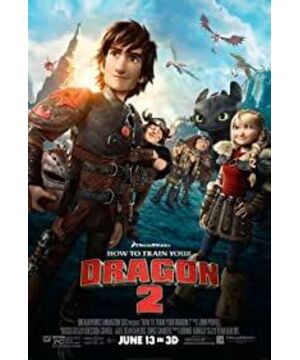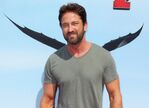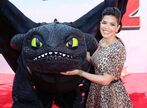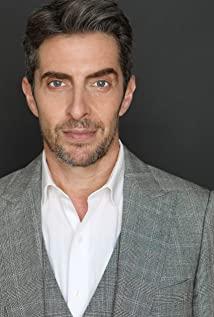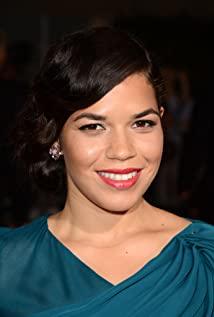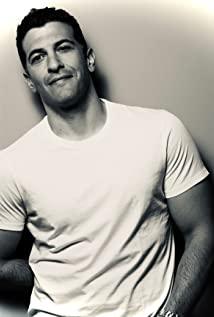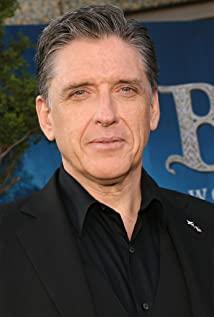"Every ancient legend told by Hollywood is a contemporary myth!" We could say the same.
How to train your dragon? This is as strange a question as "does the dragon exist". You might say, what's so weird about dragons? But in fact, in the contemporary age when science is prosperous and human beings rely on empirical analysis and experimental data as the main way to understand problems, "Dragon exists or not" is like "Unicorn exists", it will become a way to identify whether an individual is mentally or not Adult survey questions. Don't you see? Although the constellation hobby spreads at a frantic speed among the people (both in the East and the West), this does not prevent the constellation lovers from being the object of dictatorship in the "power of knowledge". "It's not scientific!" is not just a joke, it's a nomenclature, a way of showing judging criteria. You may also say, what if it doesn't exist, don't children like the imaginary world? This is indeed the case. We will send a positive energy signal of infinite tolerance to children, because they are still young and do not need to be rushed into the "normal" order of human thinking. In fact, this also confirms the previous point of view. , "Dragon exists or not" can become a question of judging adulthood in contemporary society.
But what I also want to know is, do most children living in the contemporary age really like myths or legends that are out of bounds, imaginative, and have nothing to do with reality? Probably not. DreamWorks will tell you how a teenager can become an equal friend with a dragon (or a dog?), thus not only changing the order of hatred and killing between people and dragons, but also changing the traditional relationship between people and pets. relationship (although in American animation, this is a common practice), such a story. Instead of telling the story of Lord Ye's love for dragons, I thought they didn't want to tell the little friends that humans' imagination of dragons is too good, so that when the dragon really comes, we will be scared to death ! Of course they don't want to tell their children those ancient myths, Cronus cut off his father's penis to become the boss (Greece), Nuwa and Fuxi incest and gave birth to post-flood humans (China) -Some versions), even the Odin's Valhalla, which houses human souls, said in the farewell speech after the death of Hiccup's chieftain father in the film is not easy to talk about (Scandinavia). Because...they are so different from the current world! Unlike the children in our eyes, these stories are no longer imaginative, but go far to outer space and cannot bring any positive and useful moral education to the children. So the point is, it's not how wild the kids are, but the scale of us/adults (how wild we can make them), and that scale is inseparable from the contemporary society in which we live.
Having said so much, I just wanted to clarify a question that I think is the most important question about this animation - in fact, it can also be regarded as a very important question for most mainstream American animation - how to grow? Or, how to successfully grow up as an American in a contemporary environment?
(Addition: As far as I can see, the only "Prince of Egypt" (1998) in DreamWorks Animation is a seamless adaptation of the real biblical mythology (it's the "Old Testament" after all, in a country where Jews are widely distributed and conservatism prevails) America, it’s hard to change!), of course, the animation still has to emphasize the arduous process of Moses growing into a good person, but this does not prevent adult audiences from interpreting it as a “pagan to believer to saint” transformation, after all, In the animation, the book tells the story of "It is not suitable for children" that the Hebrew God killed the Egyptian children. Moses did not shake his faith because of this!)
1. "Forrest Gump" narrative
About Forrest Gump, we all love him because he is a standard practitioner of the American dream. But Forrest Gump's narrative emphasizes more than just a narrative template that implements the American Dream. I want to see from it, the question of the qualifications of people who dream of the American dream, that is, who can become Forrest Gump?
You may think it's funny, people like Forrest Gump can become Forrest Gump, so who can't be Forrest Gump? Isn't that exactly what the movie is trying to convey? In fact, perhaps only people like Forrest Gump can be Forrest Gump. Is the latter part of the opinion just made up by our audience under the instigation of the movie? In fact, there is no such thing as such a detour. What I want to say is, who can dream the American dream (of course, the scope of discussion is limited to the film text): the physically handicapped (frail), the believer or the intellectually developed (jingsheng).
If we go to the world of medieval Europe or even earlier to find successful people with such a standard of finding people, our harvest rate is probably zero. In the age of cold weapons, and even earlier in the era of hand-to-hand combat, such a group of people either died early or entered the monastery (if he became a monk on the coast of England and France, he was probably killed by Viking pirates when he was young, and they liked robbing monasteries), Hiccup will be a good missionary, I believe, but never a warrior.
What kind of Viking teenager is Hiccup? He is thin, and we know from the second part that he is a premature baby, maybe a congenital physical defect (I believe, in the Vikings, it should be right to say that thin people are congenital physical defects), let him in the brain It took a lot of writing and ink to develop. He made a small sling to hunt dragons, and he was very good at playing tricks, which made his father stunned for a while. Hiccup believes in the power of love and peace, which is why he didn't want to kill him when he first saw his successful hunter of Night Fury, unlike his father, Chief Stogo, who Like the ancestors, he believes in physical strength. When the chief's father asked the chief to hit the tree with his head, he would hit it without a second question, and he would definitely break it (as explained in the second part), he was disappointed with his son , this disappointment was simply doomed, because he, like other Vikings, could not imagine and believe how a man who was physically weak could become a hero and a leader.
As viewers, of course we all know that Hiccup was a hero in his father's mind, whether at the end of the first part or before his father died in the second part. Has Hiccup changed? Of course it has changed, but what has it changed? Is it to be strong or to be valued by force and fitness like a father? Obviously not, he became more obsessed with his own value orientation and completed the growth process at the cost of insisting on his dream (heroic loss of a leg). So, in the "Forrest Gump" narrative, what exactly has changed? Is that Forrest Gump? He's still "stupid", just more obsessed with things others ignore. What has changed is a standard, a standard for how to distinguish modern people from pre-modern people, a standard for dividing those who mocked Forrest Gump from those who mocked Forrest Gump, Old Chief Stogo and Hiccup. The former are still living in the thinking of cold weapons and take the law of the weak as the rule of life, while the latter seem to have suddenly modernized, and there has been a leap of civilization in just two generations. This can't help but remind me of the "high school myth" that exists in American film and television dramas, that is: in youth dramas, American public high schools are the hell we can imagine, with clear class barriers, tense interpersonal relationships, and inter-group abuse and humiliation. Commonly, appearance and size are the only measures of value; but in fashion dramas, we find that those who are considered disadvantaged in high school are "not physically strong" (nerds, other than football teams and cheerleaders). A variety of clubs), but became the elite of the times, while those with a good high school life often lived a life at the bottom. In a word, American animation is deliberately distinguishing modern and pre-modern for children. In telling the success stories of dreamers, we must not forget those characters who use the "barbaric" standard as a measure of success. They are villains. , or destined to be swept into the trash can of history. This is not only the growth of individuals, but also the "growth" of civilization.
This is a contemporary myth told to children.
2. The Motif of Growth and Responsibility
In the first epic "Gilgamesh" (two rivers), which is known as the first epic known to mankind, growth and responsibility have already begun to become one of the protagonists of the story theme. In contemporary society, we truly believe in the narrative of "come from the bottom and rise to the top of the phoenix". The social class mobility has increased, the "birth theory" has been abandoned, and the "ability theory" has become popular, so we have enough reasons. to believe it all. This is unimaginable in the pre-modern world.
Gilgamesh is a member of the Sumerian royal family; Hercules, Jason, Achilles, the father or mother of these Greek heroes are gods; Xiang Yu is after the royal family of Chu, which means that he is of the Yellow Emperor-Yu bloodline , can completely become the ruler of the Central Plains (off-topic: after the Han, the origins of the heroes have all become "lowly", as the so-called "the princes and generals are rather relatives"). Ancient heroes, they need experience and growth, but the reason why they become heroes is because of their different origins.
Has "How to Train Your Dragon" completely ditched the odd, out-of-place tune? It seems no, we know Hiccup's origin, he is the son of the chief, although this does not mean that he will be able to succeed (Vikings are electoral within the family), but as long as he is strong enough, he is likely to be The son inherits the father's business, in fact, it is also true. DreamWorks doesn't seem to like telling stories about heroes with unique origins. It often likes to assign origins to non-hero heroines, and then package the heroine as a gift for the heroic hero (Disney prefers this!), Or the hero and heroine are both heroes, taking adventures together ("Shrek", "Madagascar", "Crazy Primitives", etc.), and there are only three suspected of origin theory: "The Prince of Egypt", "Pony King", "How to Train Your Dragon".
In How to Train Your Dragon, how DreamWorks deals with the relationship between parentage and upbringing. On the one hand, as mentioned in the previous section, it emphasizes the differences between fathers and sons, so that "the son inherits the father's work" into "the son contradicts the father's work". If you want your tribe to fight the dragon for life and death, I can find another way to find a way to live in harmony; you advocate force and guard the old world, but I prefer peace and create a new world. Between this break and the establishment, new values have emerged, and they are the values in contemporary life that children are more familiar with. On the other hand, eliminating the factors that emphasize the aptitude of heroes in traditional legends, whoever can carry the cauldron from a young age can kill the python giant monster and the like in the cradle. On the contrary, at the beginning of the story, given the factors that make the protagonist seem less heroic, we can see the loser attributes such as cowardice, refusal of responsibility, etc. in Hiccup. In this way, the meaning of growth in animation is no longer how to grow into a hero that meets the expectations of the public on the basis of existing background, but how to grow into a person who is beyond people on the basis of ability and background that do not match Unexpected hero. The former is a classical story, while the latter is a typical American "growing pains".
If Hiccup has become a surprising hero in the first part, then the problem that the second part wants to deal with is the hero's own psychological condition. How to make the hero feel that he is indeed a hero? Responsibility! Pete Parker (Spider-Man)'s uncle said to him, "As much as you have the ability, so much as the responsibility!" American hero stories basically try to explain this truth, and the key to the protagonist's growth is also comprehending this truth. Hiccup's experience is not the same. It's just that the second animation used a too hilarious plot design method to complete a hero's road to self-knowledge: the death of his father. The death of his father changed all the problems from the state of "can still be considered" to the state of "have to", forcing the protagonist Hiccup to complete the second growth.
In summarizing the mythological rituals in many civilizations, James Fraser believes that there is such a form of ritual: that is, by simulating or even actually implementing the death of the leader, to achieve some sacrificial purpose, so that nature can return from death-winter Vitality - Spring (see "Golden Bough"), this is a typical cyclical teleology, taking a certain action in order to return to a certain state, where the death of the leader is given an action that has the same connotation as the death of nature. Going back to "How to Train Your Dragon 2", we will find that the death of the leader is not so much a return, but rather a kind of fulfillment and development, a linear teleology. New and new human beings with old thinking and aspirations "have to" take the seat of rulers to fulfill the arrival of a new era.
It is also a contemporary myth told to children.
3. Petism
One of the topics that audiences appreciate and complain about the most is probably the “dog-likeness” of animal characters in Hollywood animations (I made up a random word myself…), whether it’s Disney or DreamWorks, animal characters are a Sniffing, licking, and selling cuteness has become commonplace. From the perspective of the relationship between human beings and animals, you can say that DreamWorks presents a magical Nordic version of the "animal world", or that it actually shows a contemporary American society dressed in ancient clothes, emphasizing that "animals are friend" is a familiar value judgment.
Americans have been unable to understand countries like China and South Korea that eat dog meat. Whether from the perspective of the extremely extensive farming and animal husbandry traditions in Europe or Puritan ethics, dogs are a tool-like existence, herding assistants and companions. rather than food. But what contemporary America emphasizes is not just a kind of concept of treating animals, especially dogs as family pets, but more emphasis on reciprocity, that is, what dogs can give to people, and what people can give to dogs, is Accompany and grow with each other.
"How to Train Your Dragon" is actually the embodiment of this idea. From the plot point of view, in the first part, when Ye Sha "Toothless Boy" was caught by Hiccup, his tail was cut off on one side, and at the end of the film, the protagonist (rarely) lost a leg, in order to Saving the tribe is also to save the "Toothless Boy". Although this is really nothing to the Vikings, it is still a bit large for DreamWorks. At the beginning of the second part, when Hiccup and Toothless are flying in the sky, we can clearly see the common physical defect of the two. They also lost a "leg" and also lost their limbs. Fitted with artificial limbs, if you think of Toothless as a dog. After recognizing his mother, Hiccup also introduced to his mother: "It's not a loss, let's see what was taken from me", referring to the fact that he exchanged his legs for a precious friendship of life and death .
If you regard your pet as a friend, it means that you are no longer asking for emotions from pets one-way, but also returning emotions to them. However, How to Train Your Dragon takes this a step further, when Toothless kills Hiccup's father unconsciously. A friend killed his father, how can this be forgiven horror? But the protagonist forgives. The information revealed in this is not only the heroic qualities of the protagonist's sensible reason and magnanimity, but also the status of the "toothless boy", and then such a cute "dragon" is like a dog. After that, the animation went on to anthropomorphize him, becoming another heroic protagonist who will not lose to the protagonist Hiccup in terms of personality status. For the protagonist Hiccup, there is another standard for how to become a qualified contemporary American: from the perspective of relationship with other species, kindness, communication, and interaction are the first requirements; Speaking, how to maintain an understanding and open-minded mind is also a top priority.
This is still a contemporary myth told to children.
View more about How to Train Your Dragon 2 reviews


